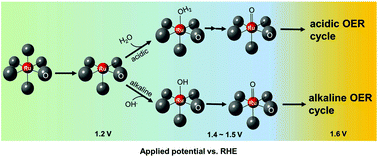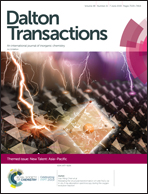Revealing the structural transformation of rutile RuO2via in situ X-ray absorption spectroscopy during the oxygen evolution reaction†
Abstract
RuO2 has been generally considered as the most active catalyst for the oxygen evolution reaction (OER) to date and shows remarkably higher activity in an acidic electrolyte than under alkaline conditions. Nevertheless, the dynamic valence state and local structure of reactive centers (i.e., Ru) in both acidic and alkaline electrolytes have not been systematically investigated yet, especially through in situ approaches. Herein, we employed in situ X-ray absorption spectroscopy to study the dynamic valence state and local structure of RuO2 during the OER in both acidic and alkaline electrolytes. In the acidic electrolyte, the Ru center was reduced near the onset potential prior to launching the OER and was oxidized during the OER process, while the coordination numbers and the bond lengths of the Ru–O path also decreased as revealed by in situ EXAFS analysis. Besides, in the alkaline electrolyte, RuO2 showed a similar behavior as revealed under acidic conditions. These results provide an evident insight into the dynamic change of the RuO2 electrocatalyst during the OER.

- This article is part of the themed collection: New Talent: Asia-Pacific


 Please wait while we load your content...
Please wait while we load your content...